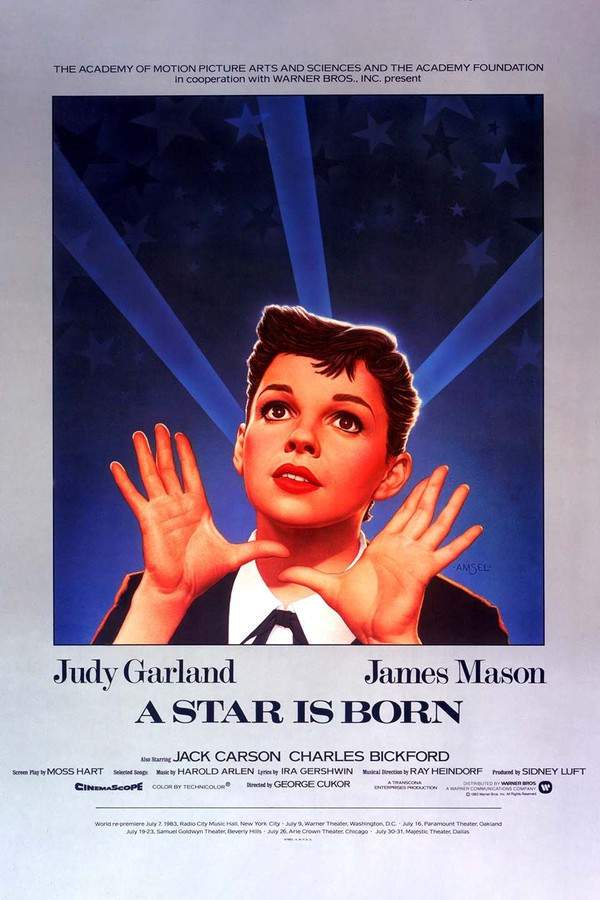
Mahanati
Year: 2018
Runtime: 176 mins
Language: Telugu
Director: Nag Ashwin
Come Be A Part of History Mahanati depicts the life and career of one of Telugu cinema’s greatest and most iconic starlets, the first Indian female super star, Savitri.
Warning: spoilers below!
Haven’t seen Mahanati yet? This summary contains major spoilers. Bookmark the page, watch the movie, and come back for the full breakdown. If you're ready, scroll on and relive the story!
Mahanati (2018) – Full Plot Summary & Ending Explained
Read the complete plot breakdown of Mahanati (2018), including all key story events, major twists, and the ending explained in detail. Discover what really happened—and what it all means.
In 1980 Bangalore, the life of the legendary actress Savitri unfolds under a veil of mystery as she lies unconscious after a startling incident. A year-long battle in a hospital keeps the public eye trained on her, yet many chapters of her past remain hidden from view. A determined, if self-conscious, journalist named Madhuravani, who speaks with a notable stutter, teams up with a keen photographer, Vijay Anthony, to craft a piece that goes beyond mere headlines. As they dig deeper, Madhuravani uncovers a surprising clue—a letter written by Savitri herself, in which she speaks of wanting to take her son to someone she calls “Shankarayya.” This discovery stirs Madhuravani’s curiosity and pushes her to pursue the story with stubborn focus, even as her editor tempers expectations and pushes toward a conventional memoir rather than a sweeping life portrait.
The tale shifts gears to the 1940s, tracing Savitri’s origin in Vijayawada, where a widowed Subadrama and her daughter are taken in by Subadrama’s sister, Durgamba, and her husband, K. V. Reddy. Here, the family dynamics and the strain of mounting financial pressures set the stage for Savitri’s entry into public life. The young Savitri blossoms into a gifted dancer and performer, gaining notice in the local scene as she and her friend Susheela perform in plays that briefly draw crowds away from the growing appeal of cinema. As theatre crowds dwindle in the face of film’s rising popularity, the family’s finances wobble, and the pressure to break into the film industry grows. A studio employee named Ramasamy, later known by the nickname Gemini Ganesan, spots Savitri and offers a chance at a provincial future in Madras, helping her navigate the initial hurdles of a Tamil-language industry she is just beginning to understand.
The path to stardom is rocky. Savitri is initially offered a role opposite Ganesan, who mentors her by helping her learn Tamil and adapt to the pace of cinema. Her perseverance pays off when she lands a dancing part in a film and, soon after, earns a more substantial role. Her performance captivates audiences, and she climbs rapidly from supporting parts to lead roles. The pair—Savitri and [Gemini Ganesan]—develop a chemistry that turns them into screen icons, and their professional collaboration deepens into a private emotional bond. Savitri’s radiant rise as a top star coincides with a personal love that flourishes despite the fact that Ganesan is married, complicating their relationship and inviting public scrutiny. Their secret marriage meets fierce resistance from families and fans alike, yet it endures long enough to shape the arc of her career.
As Savitri becomes a global sensation, she raises the bar for what a female star can achieve. She juggle demanding schedules, public adulation, and the expectations of a family watching her every move. The momentum of her career continues to accelerate, and the industry pushes her toward larger, more ambitious projects. She takes on a groundbreaking all-woman project, galvanizing peers—directors, writers, and fellow performers—to support a bold, women-led production that would stand as a milestone in the industry. Yet personal trials begin to mount. Ganesan’s jealousy surfaces as Savitri’s fame eclipses his own, and the two navigate a turbulent chapter marked by alcohol, strain, and miscommunications.
A cascade of misfortunes follows. Savitri’s mother passes away, and the family’s finances suffer from poor choices and a tax raid that strips away much of the wealth they once controlled. The couple’s home life suffers as Savitri’s personal battles intensify. When a quarrel with her daughter over alcohol culminates in a tragic fire, the gravity of her health problems becomes clear: Savitri is diagnosed with diabetes, a revelation that casts a pall over her later years. The family’s fortunes wobble, and Savitri’s public image starts to fracture as she struggles with weight gain and losing stamina. Yet there remains a stubborn core of resilience in her, and with the help of her relatives—especially her uncle and her daughter—she seeks a path toward healing, forgiveness, and renewal.
Amid the personal storm, Savitri’s drive to contribute something lasting to the world persists. She wrestles with the idea of directing as well as starring, and while she continues to work in films, she gradually shifts to smaller, lower-budget projects that allow her some financial stability and space to experiment creatively. She begins saving and planning for a rehabilitation center, a gesture that reveals her enduring wish to give back to the community that supported her rise. She refuses to surrender everything to debt or taxes, insisting on keeping control of her resources even as the balance of power shifts in her favor. Her resolve to maintain dignity, even in hardship, remains a constant thread through these years.
In a pivotal turn, she travels to Bangalore with her son, seeking distance from the specter of scandal and the weight of expectation. A phone call to Ganesan is attempted, but she breaks the connection in a moment of anger, a decision that underscores the fragility of their complicated relationship. The toll of regret and unresolved turmoil drives her toward a dangerous path, and she slips back into alcohol, a choice that foreshadows the decline she experiences. The narrative then arcs toward a quiet, poignant end: Savitri collapses, slipping into a coma that remains with her as the years pass.
Meanwhile, Madhuravani’s personal awakening echoes Savitri’s life. Through Savitri’s memories and the arc of her experiences, Madhuravani discovers her own feelings for Anthony, [Vijay Anthony], and she learns that her stammer has begun to yield to a new, confident voice when she speaks about love and truth. In a crucial moment, she interrupts what she believes to be an engagement, only to learn that the moment is not what she expected—Anthony’s heart lies with someone else, a realization that deepens Madhuravani’s empathy for the life Savitri lived and for the sacrifices she made to pursue her art and her love. The journalist finally pens Savitri’s memoir, a detailed, moving account that honors her subject while also charting Madhuravani’s own awakening.
The film reaches its emotional closure with a quiet, tender scene in the comatose Savitri’s room. Madhuravani places a photo of Savitri’s father, a figure she never met in life, beside her, a symbolic gesture that knits together memory, legacy, and identity. Savitri dies in December 1981, leaving behind a body of work that reshaped how women could be seen on screen and how celebrity lives could be interwoven with personal sacrifice. In the final reveal, the enigmatic “Shankarayya” from Savitri’s letter is reinterpreted as a symbol—a statue that she once imagined as a father figure. The film closes on this poignant note, underscoring the intimate connection between artistic fame, family, memory, and the enduring myth of a life lived in full, even when the world never paused to fully understand it.
Last Updated: October 01, 2025 at 13:05
Explore Movie Threads
Discover curated groups of movies connected by mood, themes, and story style. Browse collections built around emotion, atmosphere, and narrative focus to easily find films that match what you feel like watching right now.
Biographies of tragic artists like Mahanati
Stories that chart the meteoric rise and heartbreaking fall of legendary creative figures.If you were moved by the poignant story of Savitri in Mahanati, explore other movies like it that delve into the lives of iconic artists. These films capture the emotional journey of genius, showing the spectacular rise and the often-devastating personal cost of fame and creativity.
Narrative Summary
These narratives typically follow a 'rise and fall' structure, beginning with raw talent and ambition leading to soaring success. The central conflict then shifts to the internal and external pressures of fame—addiction, tumultuous relationships, financial troubles—that lead to a tragic decline, often ending with a bittersweet reflection on a powerful but painful legacy.
Why These Movies?
Movies are grouped here for their shared focus on the biographical trajectory of celebrated artists, their melancholic tone, and the heavy emotional weight of watching a brilliant life succumb to its own vulnerabilities. They offer a deeply moving, often cautionary, look at the price of greatness.
Emotional dramas with heavy themes like Mahanati
Deeply moving character studies where profound grief is met with enduring human strength.For viewers who appreciated the emotional depth and heavy themes of Mahanati, this section features similar dramatic stories. Discover movies that share a melancholic tone and explore complex relationships, personal sacrifice, and the strength found in facing immense adversity.
Narrative Summary
The narrative pattern revolves around a central character confronting a series of life-altering hardships—such as loss, illness, or ruin. The journey is internal, focusing on their emotional processing, moments of despair, and the gradual, often painful, path toward resilience or acceptance, rather than a simple, happy resolution.
Why These Movies?
These films are connected by their dominant melancholic tone, heavy emotional weight, and a pacing that allows for deep immersion into a character's emotional world. They are united by a commitment to exploring the full spectrum of human sadness and the dignity found within it.
Unlock the Full Story of Mahanati
Don't stop at just watching — explore Mahanati in full detail. From the complete plot summary and scene-by-scene timeline to character breakdowns, thematic analysis, and a deep dive into the ending — every page helps you truly understand what Mahanati is all about. Plus, discover what's next after the movie.
Mahanati Timeline
Track the full timeline of Mahanati with every major event arranged chronologically. Perfect for decoding non-linear storytelling, flashbacks, or parallel narratives with a clear scene-by-scene breakdown.

Characters, Settings & Themes in Mahanati
Discover the characters, locations, and core themes that shape Mahanati. Get insights into symbolic elements, setting significance, and deeper narrative meaning — ideal for thematic analysis and movie breakdowns.

Mahanati Spoiler-Free Summary
Get a quick, spoiler-free overview of Mahanati that covers the main plot points and key details without revealing any major twists or spoilers. Perfect for those who want to know what to expect before diving in.

More About Mahanati
Visit What's After the Movie to explore more about Mahanati: box office results, cast and crew info, production details, post-credit scenes, and external links — all in one place for movie fans and researchers.






























